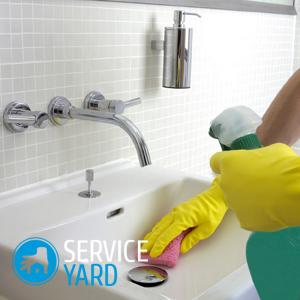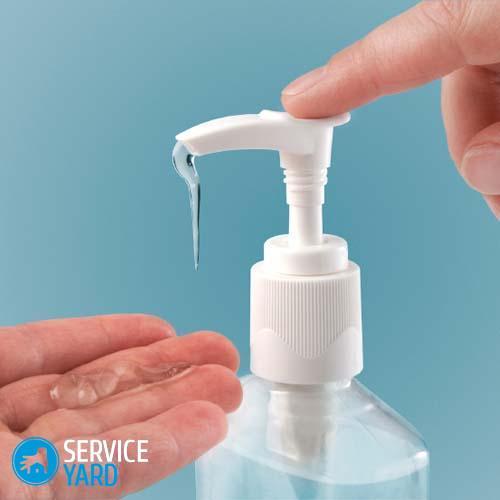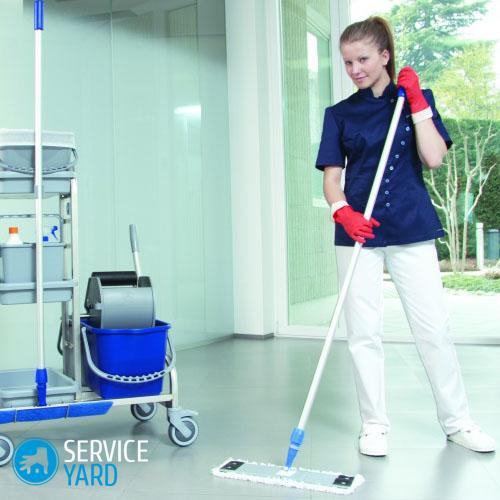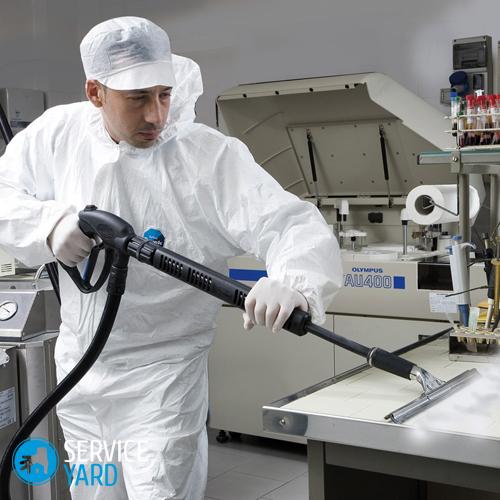Disinfectants

Disinfection is the destruction of various types of microorganisms in the environment. Disinfectants - these are the drugs with which at the same time they clean and disinfect various rooms, objects, daily household items. Disinfection is carried out in dental offices, hospitals, non-residential premises (warehouses, basements), as well as in bathtubs and kitchens for the destruction of pathogens. Timely measures taken can improve the human environment, prevent various diseases and, in general, increase comfort when in the room.
to contents ↑Means and methods of disinfection
Disinfection is divided into 2 types:
- Focal;
- Prophylactic.
Focal disinfection - features
Focal disinfection is performed directly at the site (focus) of infection. It can be performed in the current order or as the final stage of prevention. The features of each of the methods are as follows:
- Final - includes a set of measures carried out directly in the focus of an infectious disease with the goal of disinfection. In this case, special disinfectants are used once, intended for use after removing the source of infection from the focus (when the patient is discharged or hospitalized, etc.).
Important! For the final disinfection, the employees of each medical institution are responsible, as well as the specialists of the stations.
- Routine disinfection - systematic precautions in hospitals of an infectious nature. The main goal is the destruction, as well as the prevention of dispersion of any microorganisms.
Important! Employees of medical institutions are responsible for ongoing disinfection.
Preventive disinfection - features
Preventive disinfection is carried out in the absence of infectious diseases. The main objects of these events are:
- Catering facilities.
- Industrial enterprises
- Hotels
- Schools.
- Dormitories
- Train stations.
There are several basic methods by which you can perform disinfection of an object:
- Physical.
- Mechanical.
- Biological.
- Chemical.
- Combined.
to contents ↑Important! In each case, various disinfectants are used, based on the type of room, the equipment available and the intended purpose of the treatment.
Physical means
Physical means of disinfection are considered to be the least dangerous, although if used improperly, they can still give an unfavorable result for human health.
Ultraviolet
The natural disinfectant is sunlight, and the artificial means are mercury gas-light lamps. Direct sunlight has a detrimental effect on germs.
Important! Particularly sensitive to radiant energy are the spore forms of pathogens, for example, anthrax spores when exposed to the sun, die after 60 days.
To use the disinfecting effect of the sun: the windows and doors of the rooms are kept open, and infected objects are exposed to direct sunlight.
Important! The sun's rays are able to disinfect only the surface of the objects themselves, but do not penetrate into them. At the same time, the scattered light acts much weaker, for example, microbes can live for a long time in the shade.Therefore, for the disinfection of premises, sources of artificial UV radiation, irradiators, and bactericidal lamps are more often used.
Drying
Many non-spore forms of microorganisms die very quickly when dried. Given this impact, the following measures are taken:
- contaminated cleaning rooms should be regularly and thoroughly ventilated;
- in rooms with animals, a moisture-absorbing litter is laid in the form of sawdust of peat and other materials, and they are also regularly ventilated.
High temperature action
This method is used for disinfection and includes:
- Dry heat. Infected clothes are hung in hotly heated baths. It can be dressing gowns and other items made of fabrics that came into contact with infected patients. Warming up lasts for several hours, while maintaining a stable temperature of 80-90 C. Such a disinfectant kills all non-spore forms of microorganisms without exception.
Important! The effect of dry steam can be enhanced by water vapor, as is usually done in any bath.
- Ironing. A well-heated iron needs to be ironed over all infected tissues (bathrobes, towels, clothes, etc.). This method is most often used as the simplest means for disinfection at home.
- Boiling water. Boiling water destroys both non-spore and spore organisms (coagulates protoplasm). It all depends on the duration of the boil. Due to its simplicity, this method is widely used to disinfect workwear, dishes and tools.
Important! Most vegetative forms of viruses and bacteria die when boiled for up to 15-30 minutes, it takes a little more - 1.5-2 hours to destroy spore microbes.
- Water vapor. This method is used in an autoclave for sterilization. It is more bactericidal than dry steam, since at a temperature of 120 C and a pressure of 1.5-2 atm. complete destruction of all viruses, microbes and fungi is achieved. The duration of disinfection depends on the infected material and the type of pathogen.
Important! In addition to autoclaves, simpler disinfectants can be used - ordinary steam generators and special steam chambers.
- Burning fire. With the help of fire (on a fire) or a soldering paw, the infected surfaces of the inventory are burned, as well as personal care items.
Ultrasound
This method is used in special cases, for example, to sterilize a liquid medium. Ultrasound is capable of destroying all microorganisms mechanically.
to contents ↑Mechanical way
As mechanical methods, direct removal of the pathogen of an infectious disease is used. Cleaning the object is carried out using various mechanical means or by removing contaminants with a stream of water.
Important! The best way to sanitize is to use water under pressure, warm (about 40 C), with dissolved soda ash or caustic soda in a concentration of 1-2%.
The mechanical methods of sanitation also include:
- Painting.
- Whitewash.
- Wash.
- Planing.
to contents ↑Important! Keeping the premises clean and maintaining perfect order, regular cleaning of the skin of pets is of great preventive value. But in order not to cause harm to health, it is necessary to carefully and carefully select more suitable means for disinfection.
Biological method
The pathogens of infectious diseases can also be destroyed by biological means. For example, with the help of microbes-antagonists.
to contents ↑Important! Their particularly high efficiency is observed during the disinfection of wastewater, garbage chutes, etc.
Chemical disinfection methods
This method consists in the use of various drugs with a specific chemical composition. They can be made in the form of aerosols, gas, bulk solid mixtures, aqueous solutions.
An ideal disinfectant should provide a comprehensive and complete biological sterilization, which is most important - not to harm a person and other useful life forms.
The choice of a drug for disinfection depends on a specific situation and must meet the basic requirements:
- Safety for people, animals and the environment.
- High activity, ensuring the effectiveness of the drug on pathogens in a short time.
- Lack of pungent unpleasant smell.
- Environmental friendliness.
- Shelf life of working solution.
- Low cost price.
- Good compatibility with materials of processed items.
- Adequate bactericidal activity.
- A wide range of actions.
- Complete rapid dissolution in water.
Important! All means for disinfecting the chemical principle of action are classified into the following groups:
- Alkalis.
- Acids
- Phenols.
- Chlorine-containing drugs.
- Peroxides.
- Alcohols.
- Amines.
- Aldehydes.
Alkalis
Well soluble in water. Solutions with a high concentration of alkalis are a protective barrier to the development of microorganisms and at the same time a means of destruction. These include:
- Sodium hydroxide.
- Slaked lime.
- Ash.
- Soda.
- Potassium hydroxide.
- Cospos.
- Potash.
Important! When using preparations for alkali-based disinfection, it is necessary to adhere to safety measures: it is unacceptable to take caustic soda and other products with bare hands, since they corrode the skin. When working with alkalis, it is necessary to use a protective equipment: glasses, gloves, a respirator.
Acids
Acids are used much less frequently than alkalis, as they are very toxic and expensive. The most commonly used hydrochloric, acetic, formic acids, as well as an aerosol mixture based on lactic acid.
Chlorine-containing preparations
These drugs for disinfection include:
- Bleaching powder.
- Chlorine.
- Chloromorin.
- Calcium hypochlorite.
Important! These drugs are used for disinfection - both waste and drinking water, wagons, as well as disinfection of other rooms.
The positive quality of chlorine-containing drugs include:
- Significant bactericidal activity.
- Low cost.
- Easy transportability and portability.
- The ability to obtain the necessary concentration of the product during water disinfection.
The negative qualities of chlorine include:
- Destructive effect on fabrics, metals and paints.
- Surface action.
- Danger of poisoning.
Alcohols
Typically, the following alcohols are used in disinfectants:
- Ethyl.
- Isopropyl.
Important! Most often, alcohols are used as an antiseptic for living tissues. Alcohols are low toxic, but have weak fixing properties due to evaporation.
Aldehydes
Formaldehyde and glutaminoaldehyde have a broad microbiocidal activity and are capable of killing spores and fungi.
Important! The concentration of a disinfectant preparation based on such substances should be strictly observed, since excess can affect side effects on human health.
Peroxides
In disinfectants, peroxides can be in the form of hydrogen peroxide. Used in drugs in hospitals to disinfect surfaces or used in solution or in combination with other chemicals. As an antiseptic, a solution of hydrogen peroxide in a 3% concentration is used.
The advantage of the drug is that in the environment, peroxide decomposes during the conversion of oxygen and water. But like most active and effective oxidizing agents, the product is dangerous, has teratogenic properties. The smell is very pungent and specific.
to contents ↑Important! In gaseous form, hydrogen peroxide is dangerous for the eyes and respiratory system.
Stock footage
Disinfection must be carried out not in isolation, but in a complex of measures. With this approach, a targeted effect on all links of the epizootic chain is provided.Only with the observance of complexity disinfection can play a significant role - both in the prevention of the appearance of pathogens and in their destruction.
- How to choose a vacuum cleaner taking into account the characteristics of the house and coatings?
- What to look for when choosing a water delivery
- How to quickly create comfort at home - tips for housewives
- How to choose the perfect TV - useful tips
- What to look for when choosing blinds
- What should be running shoes?
- What useful things can you buy in a hardware store
- Iphone 11 pro max review
- Than iPhone is better than Android smartphones






